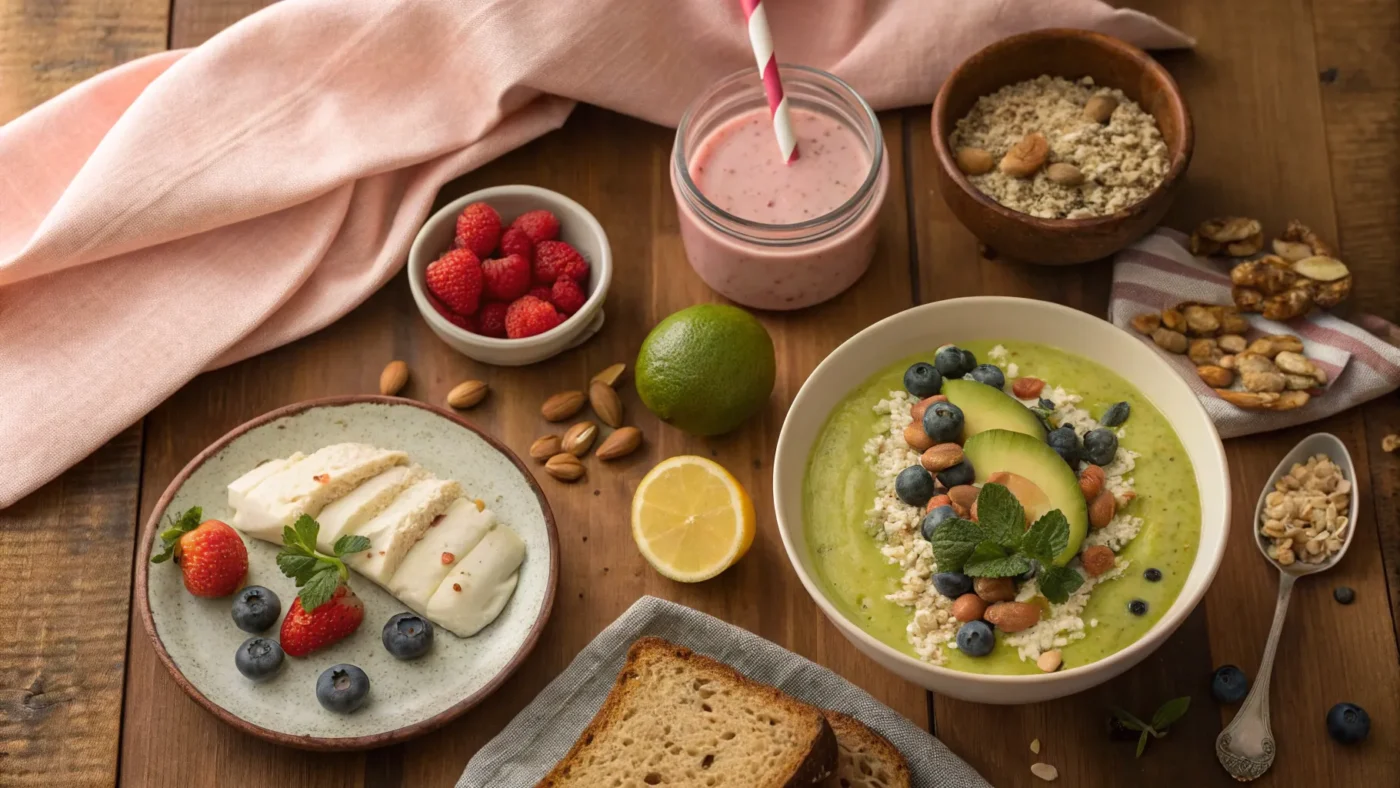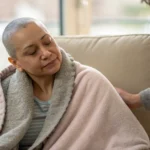I’m Dr. Jennifer Griggs, and I created this guide for Yerbba – Breast Cancer to help you understand which foods can make a meaningful difference in how you feel during chemotherapy. Nutrition isn’t a cure for cancer, and no single food will prevent recurrence, but the right choices can help you manage side effects, maintain strength, and feel more in control while you go through treatment. Below you’ll find practical, evidence-informed advice on seven food categories that can support you during chemotherapy, along with tips, sample ideas, and simple recipes you can try right away.
Why nutrition matters during chemotherapy
Chemotherapy—and many other intravenous cancer treatments like targeted therapies and immunotherapy—works by targeting rapidly dividing cells. Cancer cells divide quickly, but some healthy cells divide quickly too. The cells lining your digestive tract, from your mouth down to your intestines, are especially vulnerable. That means appetite, taste, digestion, nausea, and bowel habits can all be affected. Maintaining good nutrition helps your body repair itself, preserve muscle mass, support immune function, and improve energy levels and quality of life during treatment.
There are a few practical reasons to pay attention to food during chemotherapy:
- Cell turnover and healing: Healthy protein and calorie intake supports tissue repair, immune defenses, and recovery from treatment-related damage.
- Steroid-related muscle loss: Many patients receive corticosteroids to prevent allergic reactions or nausea. Steroids can accelerate muscle breakdown and increase infection risk; adequate protein helps protect muscle.
- Symptom management: Nausea, taste changes, dry mouth, diarrhea, and constipation are common. Certain foods and food patterns can lessen these symptoms or make them easier to live with.
- Hydration and electrolytes: Maintaining hydration supports kidney function, reduces fatigue, and can make side effects less uncomfortable.
Before I outline the seven food groups I recommend, I want to be clear:
No food can prevent or cure cancer. Nutrition is one part of overall care and does not replace medical treatment. If you’re experiencing severe side effects—especially persistent nausea, vomiting, or signs of infection—tell your medical team right away.
How to use this guide
This article is written in the first person because I speak from clinical experience caring for patients undergoing chemotherapy. Read the section on each food type and take away the practical tips and sample ideas that fit your tastes and situation. If taste or appetite is altered, adapt portion sizes and textures. If you’re undergoing treatment that increases infection risk (neutropenia), consider food safety tips in the later section.
Outline
- Ginger: natural nausea support
- Protein: preserve muscle and strength
- Whole grains: steadying, fiber-rich carbohydrates
- Healthy fats: energy-dense, heart-friendly choices
- Leafy greens: vitamins, minerals, and color
- Hydrating foods: fluids from food when water is hard to tolerate
- Smoothies: flexible, nutrient-packed, and easy to consume
- Practical tips: meal timing, taste changes, constipation & diarrhea
- Food safety and working with your medical team
- Sample meal plan and recipes
- When to contact your care team
- Conclusion and encouragement
1. Ginger: a first-line food for nausea and queasiness
Nausea and taste disturbances are among the most distressing side effects of chemotherapy. While anti-nausea medications (antiemetics) are effective for many patients, some people still feel “stomach awareness”—a low-level queasiness or reduced appetite that makes eating unpleasant. Ginger is one of the simplest and most accessible foods to try for this kind of nausea.
Why ginger helps:
- Ginger has been studied for nausea related to pregnancy, surgery, and chemotherapy; many people report subjective benefit.
- It can be taken in many forms: fresh ginger in cooking, ginger tea, ginger candies or lozenges, and crystallized ginger. Small, frequent doses throughout the day can be especially helpful.
How to use ginger:
- Try ginger tea: steep a few slices of fresh ginger in hot water for 5–10 minutes. Add honey if you like.
- Candies or lozenges: useful for mild, recurring queasiness—keep them handy between meals.
- Add fresh grated ginger to soups, stir-fries, or dressings if strong tastes are tolerable.
When to see your medical team:
If your nausea is severe, prevents you from eating or drinking, or is not controlled with the medicines your team prescribes, tell them. It’s surprisingly common for patients to underreport ongoing nausea, but we can often adjust medications to help.
2. Protein: protect muscle and support recovery
Protein is one of the most important nutrients during chemotherapy, especially if you’re receiving corticosteroids—which can accelerate muscle breakdown—or if treatment has made you weaker or more fatigued. Protein supports wound healing, immune function, and helps maintain strength.
Good protein sources include:
- Animal proteins: chicken, turkey, fish, lean red meat in moderation, eggs, and dairy (yogurt, cottage cheese).
- Plant proteins: legumes (lentils, chickpeas, beans), tofu, tempeh, edamame.
- Nuts and seeds: almonds, walnuts, pumpkin seeds—great for snacks or blended into sauces and smoothies.
- Protein-rich grains: quinoa and amaranth have more protein than most grains.
Practical tips for boosting protein intake:
- Include a protein source at every meal and snack when possible. Even small amounts help—think a boiled egg with toast, yogurt with fruit, or hummus with whole-grain crackers.
- If your appetite is small, choose energy- and protein-dense options: nut butters, Greek yogurt, smoothies with protein powder or nut butter, and small omelets with cheese or beans.
- When meat tastes off, try flipping textures: if roasted chicken is unappealing, try a pureed or sauced preparation (chicken soup, shredded chicken in a soft taco, or a creamy chicken salad).
Special considerations:
In places where protein is less accessible or expensive, legumes and lentils are excellent, affordable options. They are versatile and, when eaten with whole grains, can provide a complete amino acid profile. Some evidence also suggests diets rich in legumes may be associated with reduced long-term risk when combined with overall healthy lifestyle choices, though food alone is not a cure.
3. Whole grains: steady energy and fiber for bowel health
Whole grains are a helpful part of the chemotherapy diet because they provide complex carbohydrates for steady energy, help absorb fluids, and add fiber to support bowel regularity. Fiber can be useful for both constipation and diarrhea, depending on the type and amount, and whole grains tend to be gentler than highly processed white starches.
Examples of whole grains:
- Brown rice, wild rice, farro, barley, bulgur, oats, and whole-grain breads and cereals.
- Quinoa and buckwheat are technically seeds but function like whole grains and are rich in nutrients.
How whole grains help:
- They can make you feel more settled, reducing that empty, shaky feeling that sometimes accompanies chemotherapy.
- Fiber helps normalize bowel movements—soluble fiber (oats, barley, psyllium) tends to bulk softer stools; insoluble fiber (whole wheat, bran) adds bulk and can help with constipation.
Practical ideas:
- Start the day with a warm bowl of oatmeal topped with fruit and nut butter for calories and protein.
- Swap white rice for brown rice or a blend; add beans or a lean protein for a complete meal.
- Choose whole-grain bread for sandwiches; if chewing is difficult, lightly toast it to make it easier to manage.
When to be cautious:
If diarrhea is severe, your medical team may suggest temporarily reducing high-fiber foods until symptoms improve. Conversely, if constipation is the issue, increasing fiber and fluids often helps—whole grains play a central role here.
4. Healthy fats: concentrated calories and anti-inflammatory choices
Healthy fats provide concentrated calories and are important for maintaining weight and energy when appetite is low. They also support absorption of fat-soluble vitamins (A, D, E, K) and can make meals more palatable and satisfying.
Choose natural, minimally processed fats:
- Olive oil: a cornerstone of the Mediterranean-style diet and very versatile. Use it in dressings, to finish soups, or for gentle sautéing.
- Avocado: creamy, nutrient-dense, and easy to mash into spreads or smoothies.
- Nuts and nut butters: almond butter, peanut butter, and ground nuts add calories and protein.
- Oily fish: salmon, trout, and sardines provide omega-3 fats that may help with inflammation and overall health.
Limit heavily processed and hydrogenated fats:
- Avoid trans fats (hydrogenated oils) and limit excessive butter and deep-fried foods. These don’t provide the same health benefits and can worsen cholesterol and heart health over time.
Practical tips:
- If you feel nauseated by strong flavors, try adding small amounts of olive oil or avocado to dishes rather than heavy creams or frying.
- Use nut butters on whole-grain crackers or apples for a quick, easy, energy-dense snack.
- Include a portion of fish a few times a week if possible—baked or poached preparations tend to be well tolerated.
5. Leafy greens: dense vitamins and minerals with minimal effort
Leafy green vegetables are nutrient powerhouses. Spinach, kale, Swiss chard, collard greens, and arugula deliver vitamins (like folate and vitamin K), minerals (iron and magnesium), and phytonutrients that support overall health. Dark leafy greens are more nutrient-dense than iceberg lettuce, though iceberg still contributes hydration if you prefer milder greens.
How to include them:
- Add a handful of spinach to smoothies—it’s mild and blends well.
- Saute kale or Swiss chard gently with olive oil and garlic for a warm side dish.
- Top sandwiches or bowls with raw mixed greens when textures and tastes are acceptable.
Practical notes:
- If you are taking blood thinners, check with your medical team about consistent vitamin K intake before making large changes in leafy green consumption.
- If mouth sores or sore throat make chewing difficult, cook greens until tender or blend them into soups and smoothies.
6. Hydrating foods: fluids from food when plain water is unappealing
Staying hydrated is essential during chemotherapy. Many people are told to drink “eight glasses” of water, but that advice doesn’t consider that we get a significant portion of daily hydration from foods—especially fruits and vegetables. If plain water tastes metallic or unappealing during treatment, hydrating foods can fill the gap.
High-water foods to try:
- Melons (watermelon, cantaloupe), grapes, oranges, and berries—sweet and cooling, often easier to tolerate.
- Raw vegetables: cucumbers, bell peppers, celery, and lettuce provide crunch and water content.
- Broths and watery soups: chicken or vegetable broths deliver both fluids and some electrolytes and are often soothing.
Practical tips:
- If plain water is unappealing, try flavored waters (a slice of lemon, lime, or cucumber), herbal teas, or diluted fruit juices.
- Eat cold or room-temperature fruit if heat brings out stronger chemical tastes.
- Frozen fruit bars or smoothies can be refreshing and hydrating without the volume of a full glass of water.
7. Smoothies: flexible, nutrient-dense, and easy to consume
Smoothies are one of my favorite tools for patients experiencing appetite loss, taste changes, or fatigue. They are inherently versatile and can combine protein, healthy fats, fiber, leafy greens, and hydrating fruit all in one drink. They are particularly useful when eating solid food feels overwhelming.
Why smoothies work well:
- They are easy to sip slowly, making them ideal for patients with nausea or a small appetite.
- They can hide textures and tastes that are off-putting—for example, a green smoothie can disguise bitter greens with fruit and nut butter.
- They are quick to prepare and can be made in batches and frozen for convenience.
Basic smoothie-building components:
- Liquid base: water, milk (dairy or plant-based), yogurt, or coconut water.
- Protein: Greek yogurt, cottage cheese, protein powder (use where appropriate and approved by your medical team), silken tofu, or nut butter.
- Healthy fat: avocado, nut butter, or seeds (flax, chia).
- Greens: spinach or baby kale (milder flavor).
- Fruit: berries, banana, mango, or melon for sweetness and hydration.
- Optional add-ins: spices like cinnamon or grated ginger for nausea relief; oats for extra fiber and bulk.
Sample smoothie recipes:
- Ginger-Berry Recovery Smoothie: frozen berries, banana, a thumb of fresh ginger, Greek yogurt, a spoonful of almond butter, and water or milk—blend until smooth.
- Green Protein Smoothie: spinach, frozen mango, silken tofu or protein powder, chia seeds, and oat milk. Sweeten lightly with honey if needed.
- Hydrating Melon Smoothie: cubed watermelon and cantaloupe, a squeeze of lime, a few ice cubes, and plain yogurt—quick, cooling, and hydrating.
Cost and convenience:
Buying smoothies can be convenient, but they can also be pricey. Investing in a small blender or personal blender can pay off quickly—blended smoothies keep well in the refrigerator for up to 24 hours (though fresh is best) and freeze well in single portions.
Practical strategies for common chemotherapy-related eating challenges
Chemotherapy can bring a range of eating-related problems. Below are practical, simple approaches to the most common issues:
Nausea and reduced appetite
- Eat small, frequent meals rather than three large ones.
- Have bland, easy-to-digest options on hand—plain crackers, toast, or applesauce.
- Use ginger (tea, candies, or fresh) as discussed earlier. Ask your team if your anti-nausea medications can be adjusted.
- Try cold or room-temperature foods if heat increases smells that trigger nausea.
Taste changes and metallic taste
- Switch up flavor profiles—if sweet things taste metallic, try savory or tart options.
- Use plastic utensils if metal tastes off. Use lemon or other acidic flavors to brighten foods.
- Experiment with herbs and spices to mask undesirable tastes (if tolerated).
Mouth sores or sore throat
- Choose soft, moist foods: smoothies, pureed soups, yogurt, scrambled eggs, mashed potatoes.
- Avoid acidic, spicy, or rough-textured foods when sores are present.
Constipation
- Increase whole grains, fruit with skin if tolerable, vegetables, and fluids.
- Keep physically active as able—walking can stimulate bowel function.
- Talk with your medical team about safe laxatives if needed; don’t rely on unproven herbal remedies without guidance.
Diarrhea
- Consult your care team promptly if diarrhea is severe or persistent—dehydration is a risk.
- Temporarily reduce high-fiber foods if advised, and use gentle, low-fiber options like bananas, white rice, applesauce, and toast until symptoms improve.
- Consider oral rehydration solutions if electrolyte replacement is necessary.
Food safety during chemotherapy
Chemotherapy can lower white blood cell counts (neutropenia), increasing the risk of infection. Safe food handling becomes especially important if you’re immunocompromised. While not all patients will be neutropenic, many will at some point, so it’s useful to follow basic food safety precautions as advised by your oncology team.
General food safety tips:
- Avoid raw or undercooked eggs, unpasteurized dairy, raw shellfish, and raw sprouts if your team advises caution.
- Wash fruits and vegetables thoroughly. If mouth sores are present, cooked fruits and vegetables may feel better to eat.
- Keep refrigerated foods chilled and avoid leftovers that have been stored for extended periods. Reheat thoroughly.
- When in doubt about a food’s safety, ask your oncology nurse or dietitian for personalized guidance—recommendations vary depending on blood counts and treatment.
Working with your medical team and a dietitian
Your oncology team is your first resource. If you’re experiencing unrelieved nausea, vomiting, diarrhea, weight loss, or signs of infection—contact them promptly. Many centers offer oncology dietitians who can help you design a nutrition plan that fits your symptoms, cultural preferences, and budget.
Reasons to involve a dietitian:
- Personalized meal planning that accounts for symptoms, medication side effects, and nutritional goals.
- Guidance on supplements if needed (we didn’t cover supplements in this guide), and advice on safe options during treatment.
- Resources for practical issues like grocery shopping, budget-friendly meals, and food preparation when energy is low.
Sample one-day meal plan using the top seven foods
Here’s a flexible sample day that integrates the seven recommended food types. Adjust portion sizes and ingredients according to your appetite, taste preferences, and medical advice.
- Breakfast: Warm oatmeal made with milk or fortified plant milk (whole grain), topped with mashed banana, a spoonful of almond butter (protein/fat), and a sprinkle of cinnamon. A cup of ginger tea to ease morning queasiness.
- Mid-morning snack: Greek yogurt with berries (protein + hydrating fruit) and a few chopped walnuts (healthy fat).
- Lunch: Quinoa and black bean bowl (whole grain + protein) with avocado slices (healthy fat), a handful of raw spinach or mixed greens, and a lemon-olive oil dressing. A side of cucumber and bell pepper sticks for hydration.
- Afternoon snack: Smoothie: spinach, frozen mango, silken tofu or protein powder, a tablespoon of peanut butter, and water or milk as the base (greens + protein + healthy fat + hydrating fruit).
- Dinner: Poached salmon (protein + healthy fat) with brown rice (whole grain) and sautéed Swiss chard or kale (leafy greens) gently cooked in olive oil. A small bowl of melon for dessert to boost hydration.
- Evening: A small ginger candy or ginger tea if needed for nausea, and a few whole-grain crackers with hummus (additional protein and carbohydrate) if hungry.
When to contact your care team
There are clear red flags that require immediate contact with your oncology team:
- Severe uncontrolled nausea or vomiting that prevents you from keeping fluids down.
- High fever or signs of infection (fever, chills), especially if you’re immunocompromised.
- Severe diarrhea or vomiting causing dehydration.
- Significant unintended weight loss or weakness that limits daily function.
Otherwise, talk with your care team or dietitian about persistent symptoms that interfere with eating so they can recommend medications, dietary adjustments, or other supportive measures.
Practical shopping and preparation tips
When energy is limited, shopping and cooking can feel overwhelming. Here are a few strategies to make it easier:
- Stock up on ready-to-eat high-protein options: yogurt cups, pre-cooked hard-boiled eggs, canned tuna or salmon (in water), precooked rotisserie chicken.
- Make batches when you feel well and freeze portioned meals—soups, stews, grain bowls, and smoothies frozen in single-serve bags.
- Use kitchen helpers: pre-washed salad greens, steam-in-bag vegetables, and pre-cut fruits and vegetables reduce prep time.
- Keep simple snacks on hand: whole-grain crackers, nut butter, cheese sticks, hummus, and fresh fruit.
Addressing budget and access concerns
Nutrition recommendations should be realistic. If protein or fresh produce is expensive or difficult to access, consider these approaches:
- Canned beans and lentils are affordable and nutrient-dense—rinse them to reduce sodium before using.
- Frozen fruits and vegetables are often cheaper than fresh, have similar nutritional value, and can be stored longer.
- Buy whole grains in bulk (oats, brown rice) for savings and shelf life.
- Community resources—food pantries, community meals, and hospital-based nutrition programs—can help stretch your budget during treatment.
Final thoughts and encouragement
Going through chemotherapy is physically and emotionally challenging. While no single food will cure cancer, making informed choices about what you eat can help you feel stronger, support your body’s healing, and regain a sense of control. The seven food approaches I’ve outlined—ginger, protein, whole grains, healthy fats, leafy greens, hydrating foods, and smoothies—are practical, flexible, and can be adapted to your symptoms, preferences, and budget.
Remember these key points:
- Tell your medical team about uncontrolled symptoms—especially nausea, vomiting, diarrhea, or fever.
- Prioritize protein and include it in every meal and snack where possible.
- Use ginger early and often for low-level nausea and queasiness, and ask about medication adjustments for severe symptoms.
- Hydrate with both fluids and water-rich foods if drinking plain water is difficult.
- Work with a dietitian if you’re struggling to meet nutritional needs or if you have special dietary restrictions.
I hope this comprehensive guide gives you practical, evidence-informed ideas you can use today. If you found these suggestions helpful, consider keeping a simple food and symptom diary for a week—note what you ate and how you felt afterward. That can be a powerful way to identify what helps you personally and to share useful information with your care team.
Above all, be gentle with yourself. Eating well during chemotherapy is often about doing the best you can day-to-day, not perfection. Small, consistent choices add up and can help you feel more resilient as you go through treatment.
Wishing you strength and good nutrition on your treatment journey.











Leave a Comment